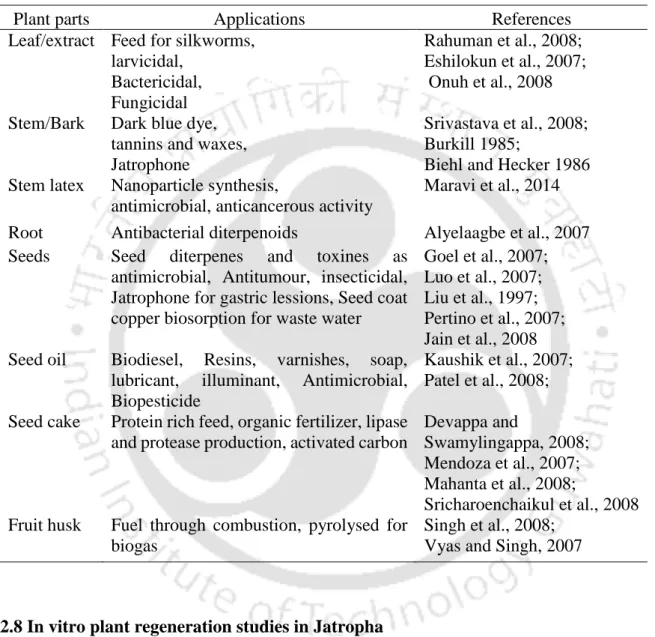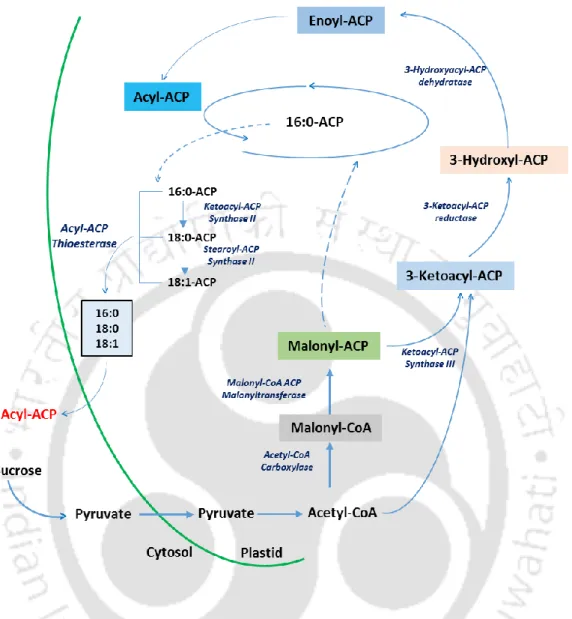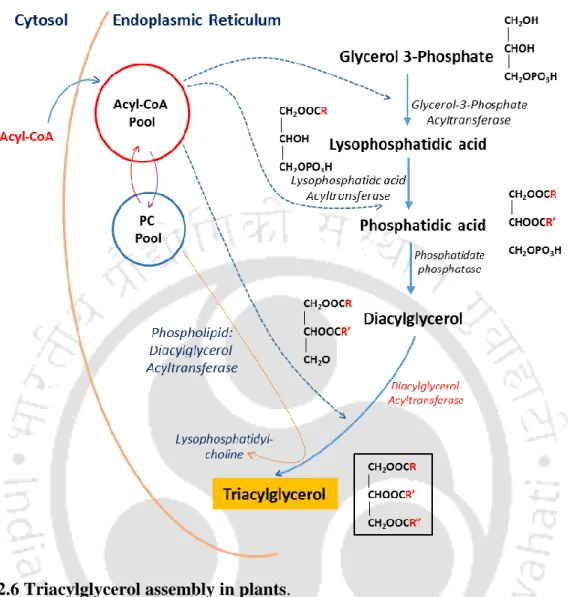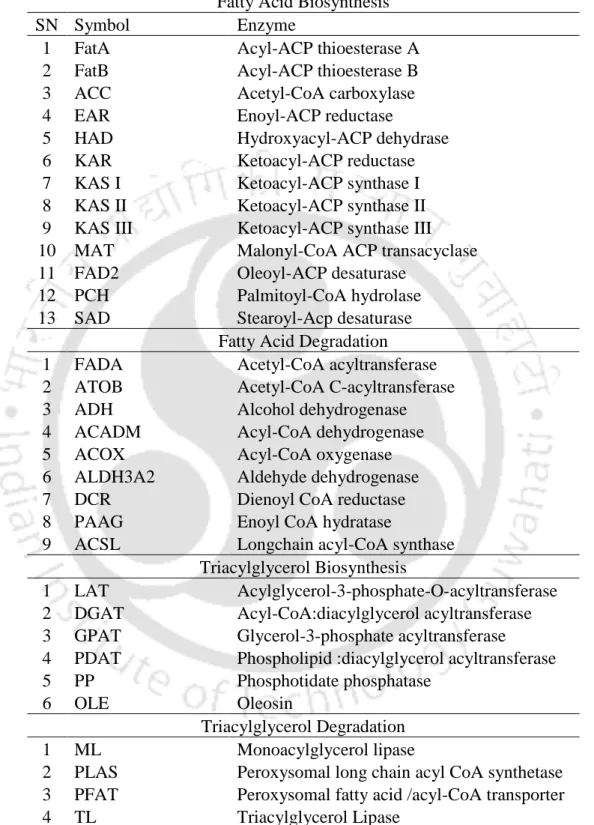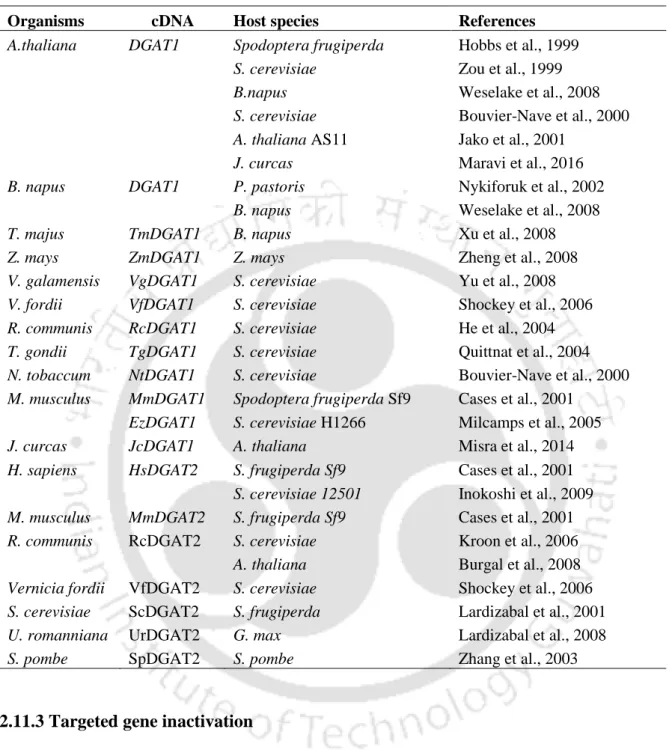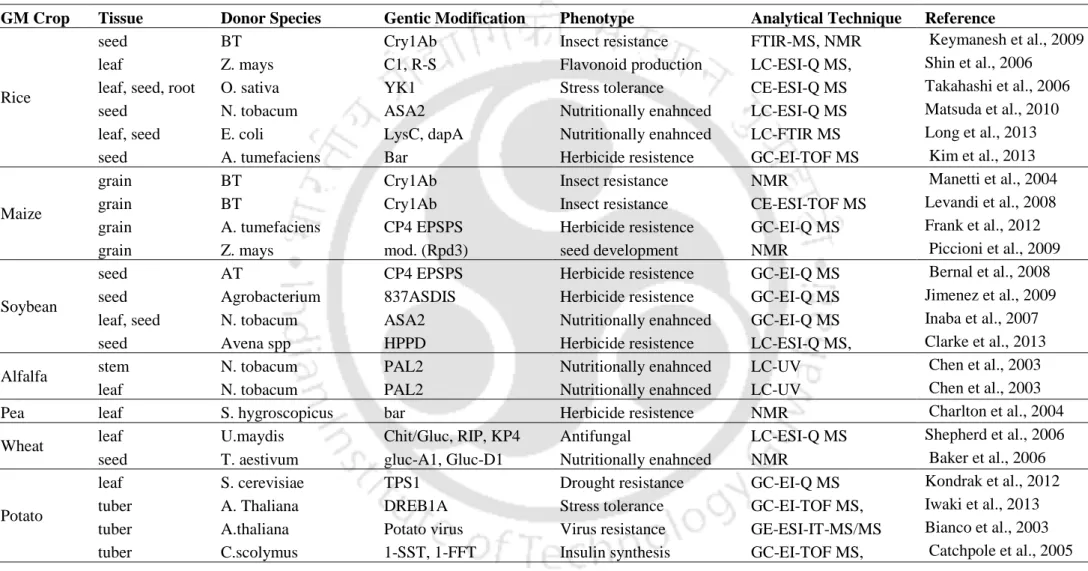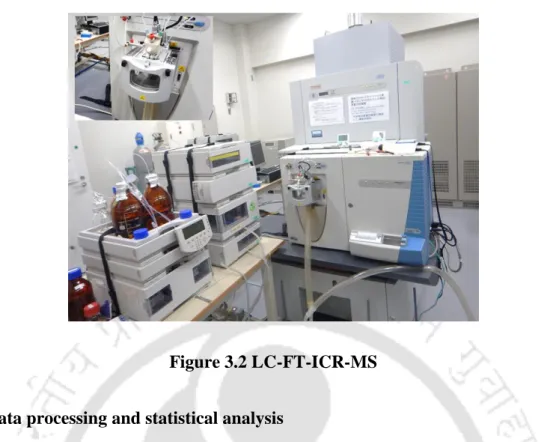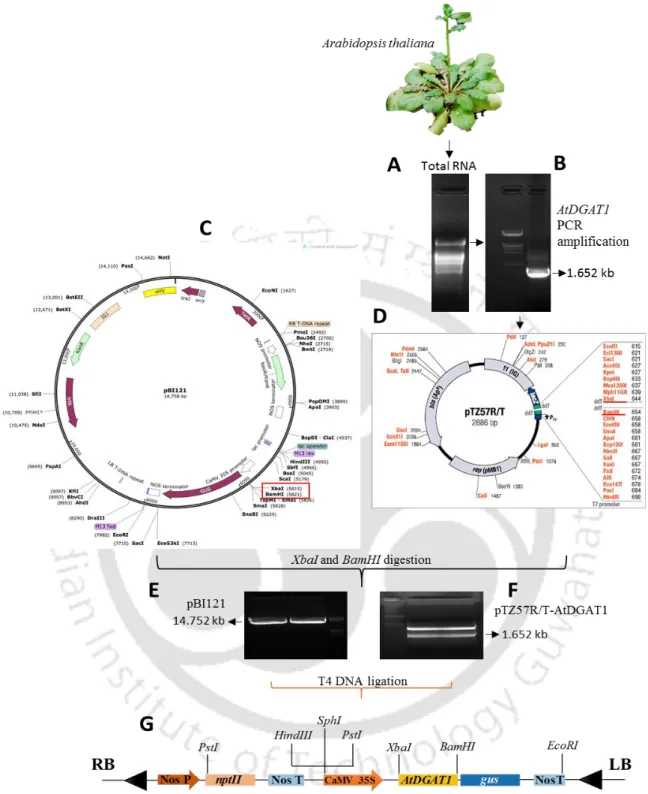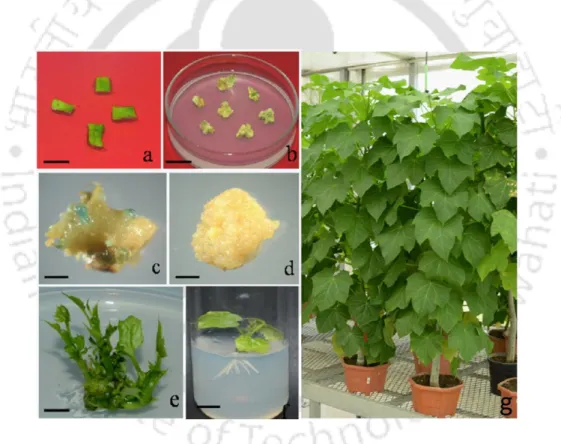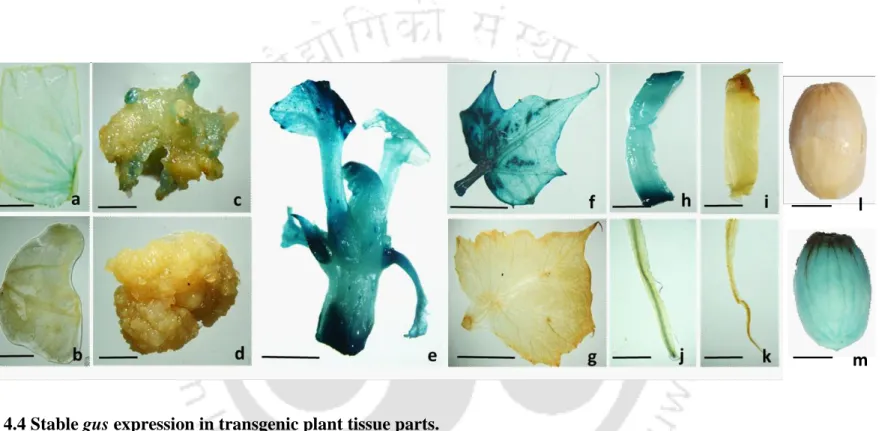I hereby declare that the matter included in this dissertation entitled "Overexpression of AtDGAT1 and analysis of the metabolome of Jatropha curcas L. is certified as the work described in this thesis entitled "Overexpression of AtDGAT1 and analysis of the metabolome of Jatropha curcas L Jatropha curcas L is an important non-edible oilseed that has received worldwide attention as a feedstock for biodiesel.
In the present study, transgenic Jatropha plants that accumulate a high level of TAGs in seeds as well as leaves were developed by overexpressing Arabidopsis DGAT1. Carbohydrates are important osmotic solutes in leaves and seeds and are potentially involved in the transformation of the carbon source into lipids. The abundance of these lipid derivatives showed significant differences in the metabolic profiles between the transgenic and wild-type Jatropha curcas lines.
79 4.4 Stable gus expression in transgenic plant tissue parts 80 4.5 Molecular analysis of transgenic plants of Jatropha curcas 81 4.6 Southern blot hybridization analysis of five independently selected. 99 4.18 Heatmap of the 69 metabolites detected in Jatropha curcas leaf samples 100 4.19 Score Plot of Principle component analysis of the metabolites detected 101.
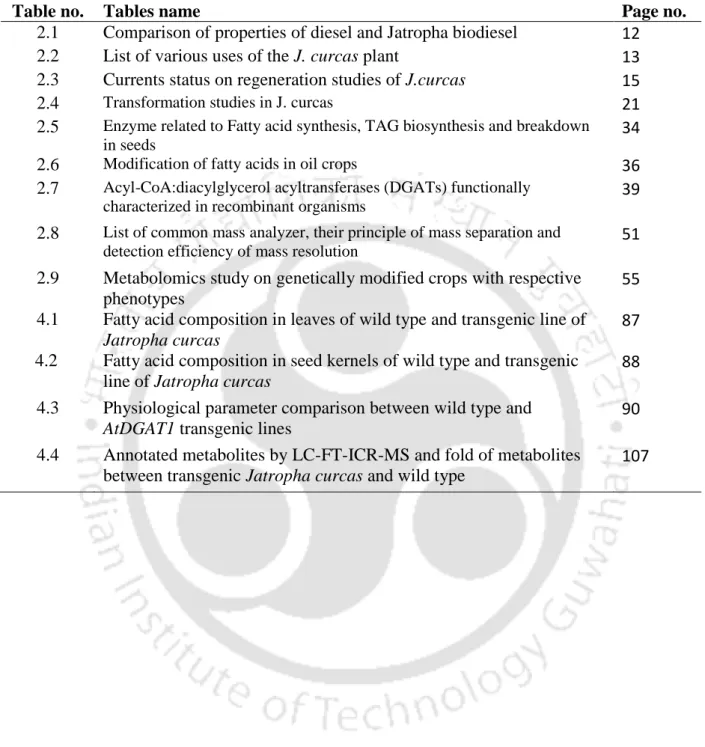
Introduction 1
Furthermore, there has been limited research on oil enhancement through biotechnological interventions (Bhering et al., 2013). It is now well documented that increased expression of some enzymes involved in lipid metabolism can lead to increased oil accumulation in various plant organs (Thelen and Ohlrogge, 2002; Baud et al., 2007; Vigeolas et al., 2007). In particular, it was shown that overexpression in plants of a key enzyme for the biosynthesis of triacylglycerols (TAG), diacylglycerol acyltransferase (DGAT), the accumulation of triacylglycerols in seeds (Jako et al., 2001) and tubers (Klaus et al., Klaus et al., 2004) and leaves (Zou et al., 1997; Bouvier-Nave et al., 2000).
Recent advances in our understanding of genetic regulation of key metabolic pathway for TAG biosynthesis generate opportunity for manipulation of candidate genes for enhanced oil accumulation in plants. An EMS-induced mutation of DGAT1 in Arabidopsis thaliana (AS11) resulted in reduced seed oil content and delayed seed maturation ( Zou et al., 1999 ). However, development of an efficient plant regeneration system amenable to genetic transformation is key to successful generation of transgenic Jatropha.
Although an Agrobacterium-mediated transformation system in Jatropha using cotyledon leaf explants was reported earlier (Li et al. 2007), the protocol was found to be either inefficient or difficult to reproduce, a suggestion attributed to the inappropriate age of the explants that was used. An efficient regeneration system amenable to genetic transformation using explants of appropriate age and selecting their orientation for regeneration has been established by previous researchers in our laboratory (Mazumdar et al., 2010).
Objectives 4
FUS3 together with LEC1 positively regulates the occurrence of the ABI3 protein in the seed (Wang et al., 2007). Recently, Sujatha et al., (2008) and Maghuly and Laimer, (2013) reviewed the role of biotechnology in the improvement of Jatropha.
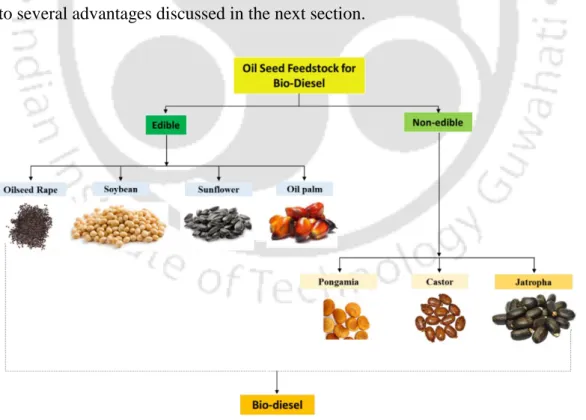
LITERATURE REVIEW
Botanical diescription 6
Agronomic requirement 8
Diversity assessment in Jatropha 9
Jatropha, being an exotic species, is well naturalized among the flora of diverse landforms in India, so there is a high probability of the existence of a significant amount of genetic variation. The physical properties of Jatropha seeds vary depending on their geographical distribution and climatic conditions. These observations clearly indicate the prominent role of habitat and environmental conditions over genotype in determining phenotypic variation in Jatropha curcas.
Some varieties of Jatropha curcas are recognized in the world based on their phenotypic properties or seed toxicity, but this classification is unrealistic, the factor of unpredictability is greater. Three varieties for example: the Cape Verdean variety that has spread throughout the world, the Nicaraguan variety with few but larger fruits and a non-poisonous Mexican variety that contains only traces of phorbol esters in the fruit (Heller, 1996; Henning, 1997). ;Sujatha et al., 2005). Furthermore, the germplasm characterization will help broaden the genetic resources of Jatropha through the introduction of diverse accessions.
Studies on morphometric, molecular and phytochemical analyzes of Jatropha germplasm have been conducted randomly around the world.
Seed oil and biodiesel characteristics 9
Reksowardojo et al (2006) compared five types of diesel – petrodiesel, Jatropha B10, B100 and palm oil B10 and B100 and found that biodiesels are more efficient in direct injection engines. The transesterification reaction consists of the conversion of triglycerides into fatty acid alkyl esters in the presence of a catalyst (Palligarnai et al., 2008) (Figure 2.3). In addition, Foidl et al. (1996) showed that both methyl and ethyl esters of jatropha fatty acids can be used without engine modification.
Previously, the physicochemical properties of Jatropha biodiesel were compared with fossil fuels in our laboratory (Mazumdar et al., 2013). However, the use of pure Jatropha biodiesel (B100) is contested (Wood, 2008) due to high NOx emissions (Reksowardojo et al., 2006) and it has been shown that engine performance can be improved with blends of diesel and biodiesel (Pramanik, 2003). Corrosion tests on engine parts and emissions analysis showed that both Jatropha and palm oil biodiesel make acceptable substitutes for diesel (Kaul et al., 2007; Reksowardojo et al., 2006).
The effects of using biofuel in internal combustion engines were recently reviewed by Agarwal (2006), while Rao et al., (2007) specifically compared diesel with Jatropha biodiesel and its blends with diesel. Jatropha had lower emissions than diesel, except for nitrogen oxides (Reksowardojo et al., 2006).

Potential co-product of Jatropha curcas 12
Other terpenoids such as jatrophatrione and acetylalerytholic acid obtained from other Jatropha species have also been shown to have antitumor activity (Torrance et al., 1977). Maravi et al., 2014 Root Antibacterial diterpenoids Alyelaagbe et al., 2007 Seeds Seeds Diterpenes and toxins as.
In vitro plant regeneration studies in Jatropha curcas 13
